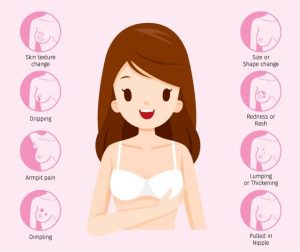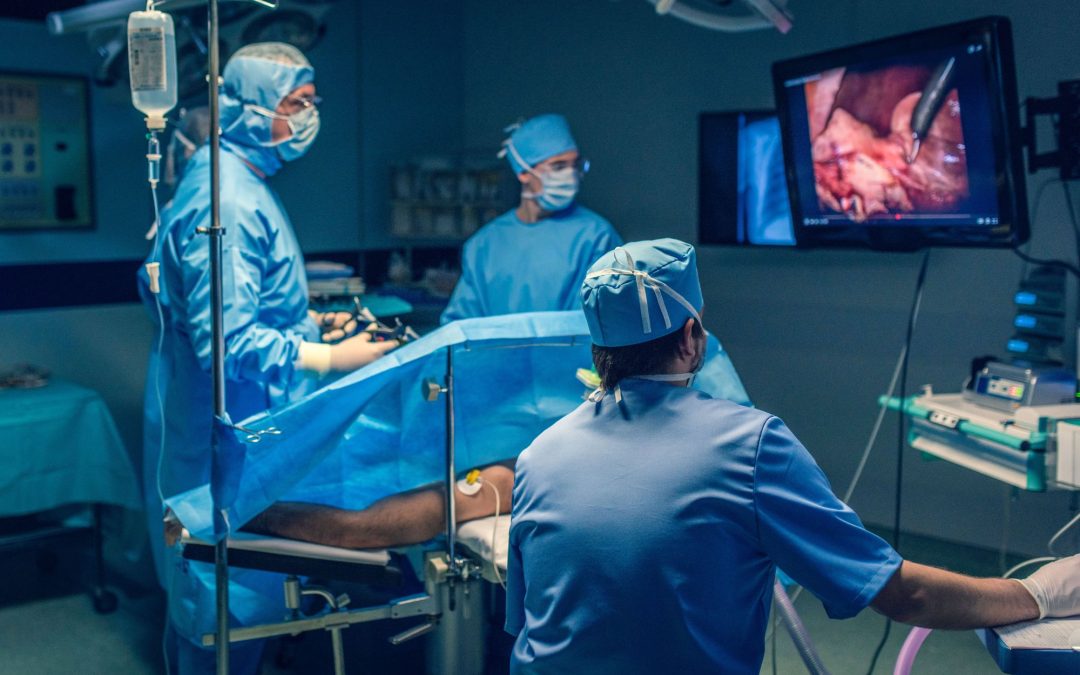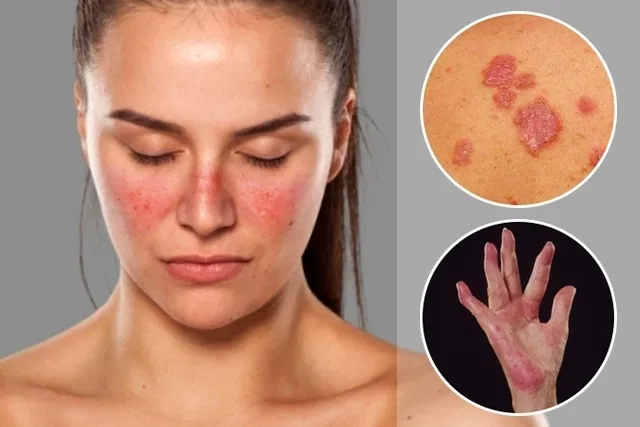Cancer occurs when changes called mutations take place in genes that regulate cell growth. The mutations let the cells divide and multiply in an uncontrolled way.
Breast cancer is cancer that develops in breast cells. Typically, the cancer forms in either the lobules or the ducts of the breast.
Lobules are the glands that produce milk, and ducts are the pathways that bring the milk from the glands to the nipple. Cancer can also occur in the fatty tissue or the fibrous connective tissue within your breast.
Signs and symptoms of breast cancer may include:
- A breast lump or thickening that feels different from the surrounding tissue.
- Change in the size, shape or appearance of a breast.
- Changes to the skin over the breast, such as dimpling.
- Peeling, scaling, crusting or flaking of the pigmented area of skin surrounding the nipple (areola) or breast skin
- Redness or pitting of the skin over your breast, like the skin of an orange.
- A newly inverted nipple

Types
- Angiosarcoma is a rare type of cancer that forms in the lining of the blood vessels and lymph vessels. The lymph vessels are part of the immune system. The lymph vessels collect bacteria, viruses and waste products from the body and dispose of them.
- Ductal carcinoma in situ (DCIS) is the presence of abnormal cells inside a milk duct in the breast. Ductal carcinoma in situ DCIS is considered the earliest form of breast cancer. DCIS is non-invasive, meaning it hasn’t spread out of the milk duct and has a low risk of becoming invasive.
- Inflammatory breast cancer occurs when cancer cells block the lymphatic vessels in skin covering the breast, causing the characteristic red, swollen appearance of the breast.
- Invasive cancer means the cancer cells have broken out of the lobule where they began and have the potential to spread to the lymph nodes and other areas of the body.
- Lobular carcinoma in situ (LCIS) usually doesn’t show up on mammograms. The condition is most often discovered as a result of a breast biopsy done for another reason, such as a suspicious breast lump or an abnormal mammogram.
- Male breast cancer is a rare cancer that begins as a growth of cells in the breast tissue of men.
- Paget’s (PAJ-its) disease of the breast is a rare form of breast cancer. Paget’s disease of the breast starts on the nipple and extends to the dark circle of skin (areola) around the nipple.
- Recurrent breast cancer may occur months or years after your initial treatment. The cancer may come back in the same place as the original cancer (local recurrence), or it may spread to other areas of your body (distant recurrence).
Risk factors.
- Women are much more likely than men are to develop breast cancer.
- Your risk of breast cancer increases as you age.
- A personal history of breast conditions.
- A personal history of breast cancer.
- A family history of breast cancer.
- Inherited genes that increase cancer risk.
- Radiation exposure.
When to see a doctor
If you find a lump or other change in your breast — even if a recent mammogram was normal — make an appointment with your doctor for prompt evaluation.



